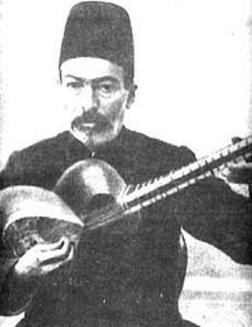The Foundation of Persian Music
In Persian music, we have a cannon of sorts that every Persian musician studies after mastering the basics of her instrument of choice. That cannon is called the Radif. The word basically means ‘order’, ‘line’, or ‘row’. There are many versions of the Radif that have been passed down from master to student over many generations.
The Radif has two main components: Dastgah, and gusheh. Dastgah, which can be literally translated as ‘system’, refers to the melodic scale used. Gusheh (pronounced: goosh-e’, ‘e’ as in ‘elk’), means ‘corner’, or as I have translated as ‘niche’. Gushehs are melodic developments that represent the various potential dynamics of a scale (dastgah).
In essence, the Radif is a collection of predominantly non-rhythmical melodic compositions that encompass the range of melodic systems (dastgah). Each piece represents a niche (gusheh) within the system (dastgah). A niche develops the scale either by focusing on a certain note in the scale, by establishing a specific musical phraseology, or by modulating to a sub-scale within the system. A niche can also contain some or all of these features.
Some future blog posts are going to discuss the Radif in detail and provide a comprehensive analysis of the Radif of Mirza Abdollah. The Radif of Mirza Abdollah is used by student of the Persian Setar, Santour, and Barbat (Oud). It is versatile because it is vast and more straightforward. There are other Radifs that a noteworthy, particularly the Radif of Mirza Hossein Gholi, which is mainly used by Persian Tar students, because the inflections used are more well suited to the Tar than other instruments.
Learning Persian Music with Radif
I grew up educated in Radif from early stages in playing my instrument. Since learning the Oud I have been able to learn not only improvisational techniques of the Persian tradition but also Turkish and Arabic traditions, which has brought me to a unique and deeper understanding of the Radif than I had before. As with anything, there are many interpretations of the Radif in its importance and in its function. There are those that perform only the Radif note by note, and there are others who learn the Radif but perform them only as interpretations of the original. I agree more with the latter, in that the Radif is meant to be a guide. In the countless recordings I have heard, I have not heard any in which the instrumentalist performs the Radif verbatim.
I want to make my belief and understanding of Radif clear: the Radif is not meant to be performed note by note, at a concert or for a solo album, it is rather a representation and collection of all the melodic possibilities envisioned in traditional Persian music. In other words, it is a teaching tool that teaches the “rules” of improvisation and melody making. I believe this because:
First, Iranian Kurdish musicians like the Kamkar family improvise freely using Dastgah but actually don’t focus their efforts on reproducing Radif, they focus more on creativity.
Second, Arabic and Turkish traditions lack a standard collected radif. They do however have an order in the sense that the melodies created in composition and improvisation are ‘ordered’ in a particular way. There are rules and guidelines that dictate to some degree how a scale will develop. Is having a Radif in Persian music really necessary then? How did it get developed anyway? These questions will be answered in future blog posts.
Third, the term ‘radif’ itself means ‘order’ suggests that this is a collection a repertoire that was brought together and pieced together for a purpose.
Fourth, there are several Radif which are studied and memorized by students of Persian music. Each Radif has some overlapping gusheh, and some have unique gusheh. But the most important gusheh usually overlap in its overall character.
In practice, most masters of Persian music know these gusheh intimately if not memorized by heart. They take the general forms of these gusheh and develop melodies based on their general feeling and character either when composing or improvising. These systems and niches are the building blocks of what is Persian music, you will even hear aspects of radif in Persian pop music.
I will be creating a series of blog posts dealing specifically with each Dastgah and their characteristics in detail to create an image of how Dastgah works independently and in relation to each other. I believe it will vastly aid in understanding, propagating, and memorizing the essential characteristics of Radif, which make up the building blocks of Persian music. At this point, I will use the Radif of Miraza Abdollah in my analyses because of its versatility and my own familiarity with it.
Did you enjoy this article? Get our latest articles in your email inbox!
[mc4wp-form]


I just wanted to take the time to thank you for your well written articles. As a setar player and an enthusiast of persian traditional music living in Sweden, I find your articles very useful.
So thank you and continue doing great things.
All the best,
Ali
Thank you, I appreciate it.